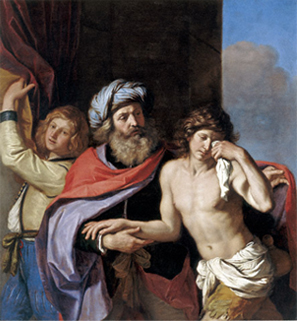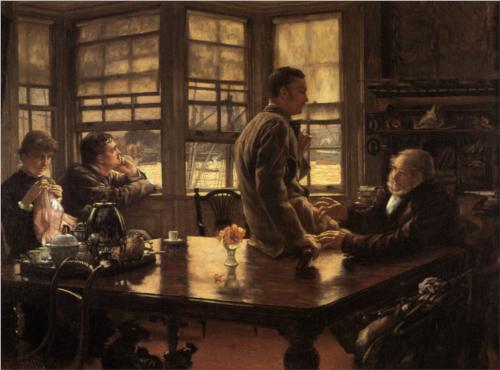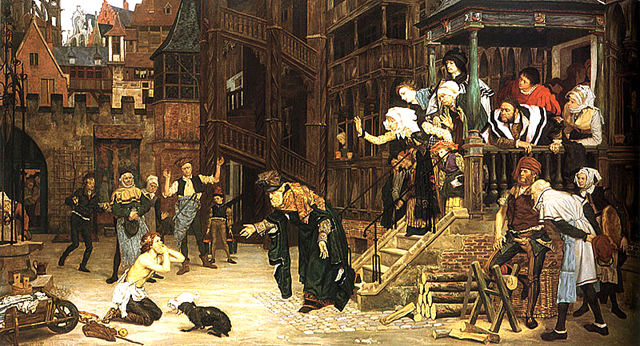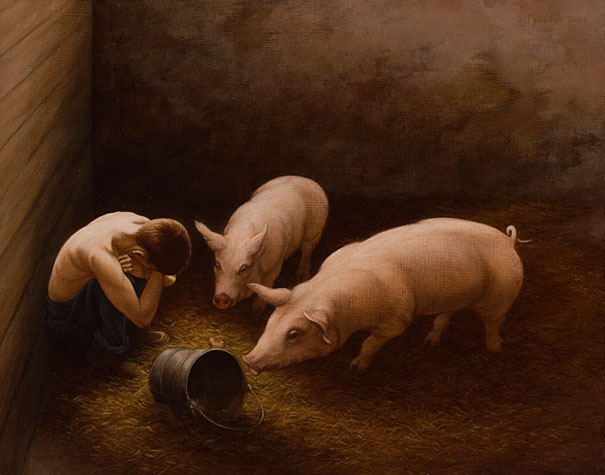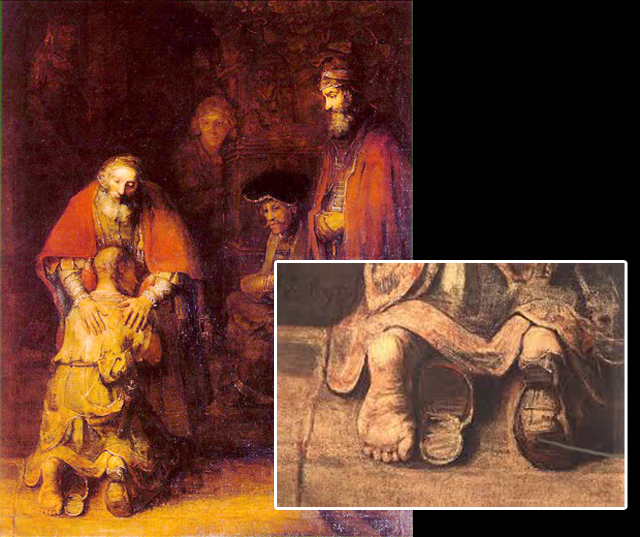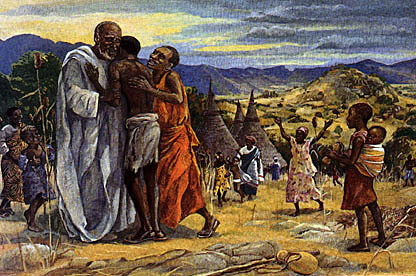The Prodigal Son in Art
The Story of the Prodigal Son is visually rich. Artists through the ages have loved it.
Part of the fascination with the story is the multiple points of view. It is easy to focus on the Father and Son and occasionally the second son.
This artist, Giovanni Barbieri, does this beautifully. We have little to notice except the gestures of the three key figures.
But many artists recognize that there are more players in the story. The Prodigal Son is worn down by many bad relationships. Some artists focus on this broader interpretation as seen in two paintings below by James Tissot (c. 1880).
One concentrates on the Return, the other on the Leaving.
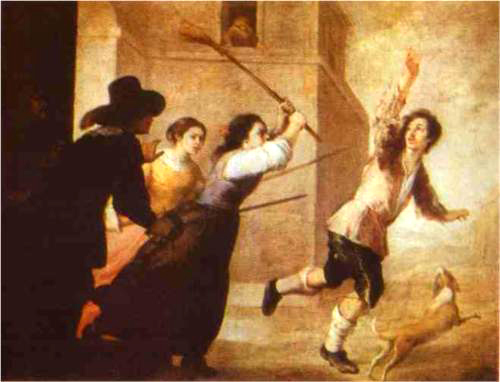 Artists enjoy taking us to the depths of the son’s despair. Look at this painting which shows the son’s rejection by the society he so longed to own.
Artists enjoy taking us to the depths of the son’s despair. Look at this painting which shows the son’s rejection by the society he so longed to own.
And then there is the scene with the hogs. What an image of despair!
There is plenty of emotion to explore whether it is in the selfish leaving, the desperate squandering, or the pathetic, yet joyful return.
Look below at the treatment by Rembrandt. Focus on the story told just in the depiction of the son’s feet.
It is easy to re-interpret the story through contemporary eyes. Each depiction above shows the culture and times of the artist. This painting by an African artist is no different.
Finally, a simple line drawing can be as moving as a full-color mural.
How would you draw or sculpt the Parable of the Prodigal Son?

